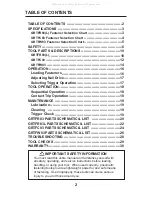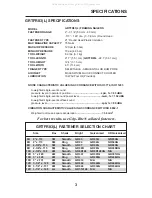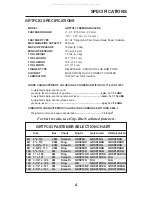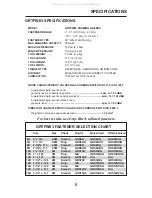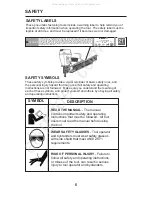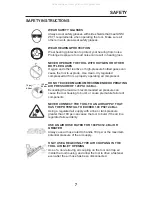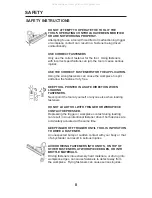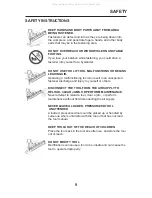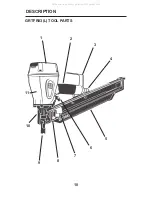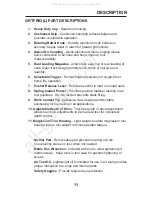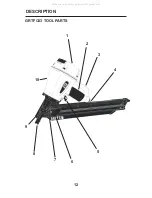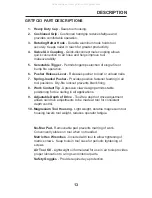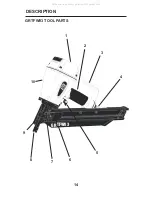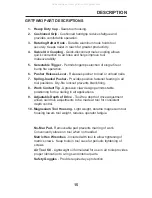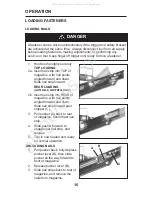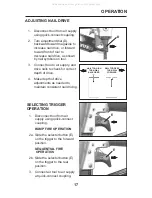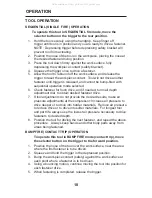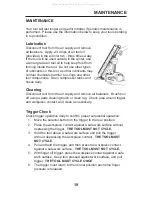
7
WEAR SAFETY GLASSES
Always wear safety glasses with side shields that meet ANSI
Z87.1 requirements when operating the tool. Make sure all
others in work area wear safety glasses.
WEAR HEARING PROTECTION
Wear hearing protection to protect your hearing from noise.
Prolonged exposure to loud noise can result in hearing loss.
NEVER OPERATE THE TOOL WITH OXYGEN OR OTHER
BOTTLED GASES
Oxygen and other reactive or high-pressure bottled gases can
cause the tool to explode. Use clean, dry regulated
compressed air from a properly operating air compressor.
DO NOT EXCEED MAXIMUM RECOMMENDED OPERATING
AIR PRESSURE OF 120 PSI /8.6 Bar.
Exceeding the maximum recommended air pressure can
cause the tool housing to burst, or cause premature failure of
components.
NEVER CONNECT THE TOOL TO AN AIR SUPPLY THAT
HAS THE POTENTIAL TO EXCEED 180 PSI/12.4 Bar.
Using a regulated air supply with a line or tank pressure
greater than 180 psi can cause the tool to burst if the air line
regulator fails suddenly.
USE AN AIR HOSE RATED FOR 180 PSI/12.4 Bar OR
GREATER
Always use air hose rated to handle 180 psi or the maximum
potential pressure of the air supply.
ONLY USE A RELIEVING-TYPE AIR COUPLING IN THE
TOOL AIR INLET OPENING
Use of a non-relieving air coupling on the tool can trap air
inside the tool housing, and allow the tool to drive a fastener
SAFETY
SAFETY INSTRUCTIONS
even after the air hose has been disconnected.
120 psi
4.9 bar
70 psi
8.3 bar
All manuals and user guides at all-guides.com


